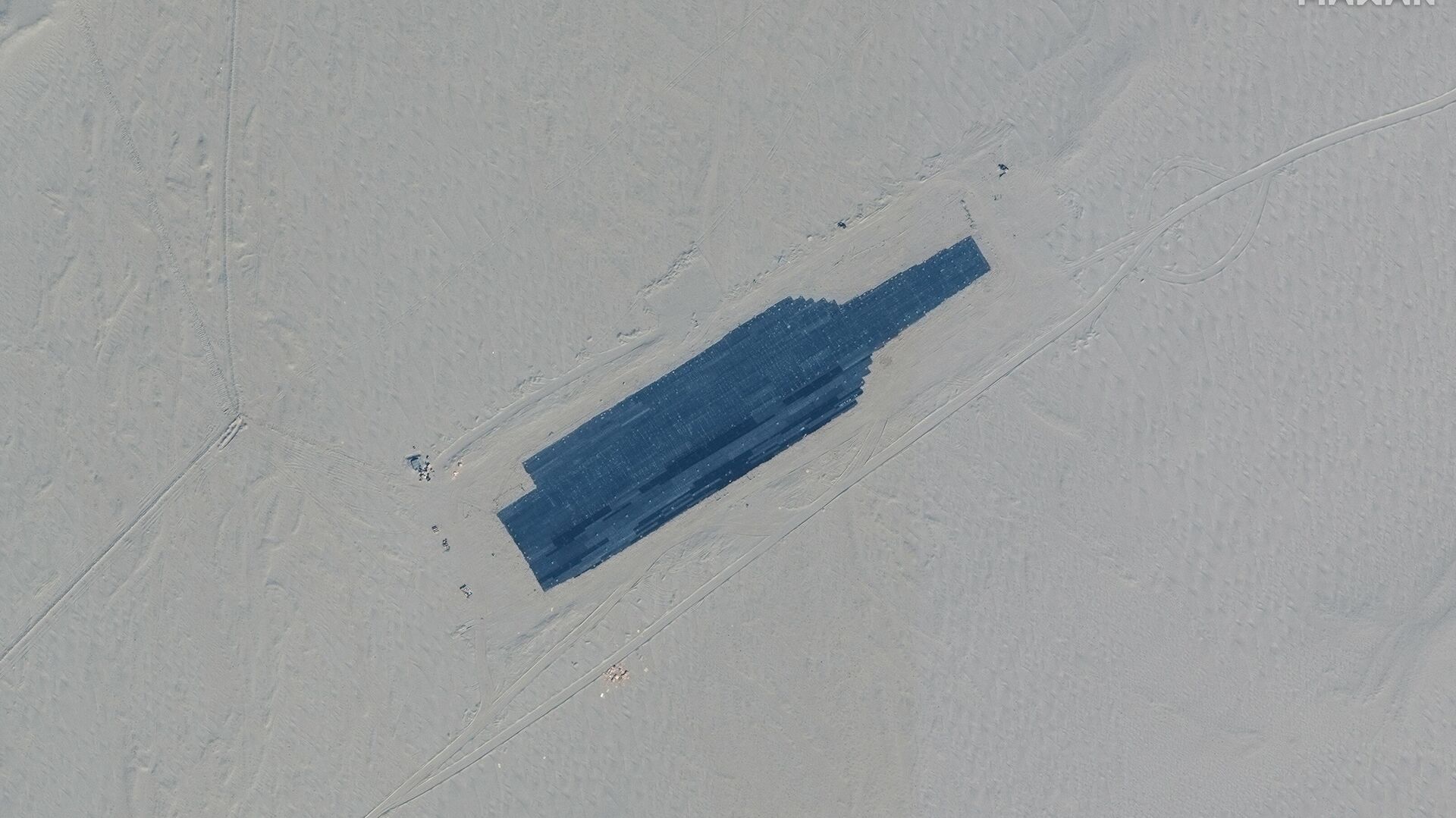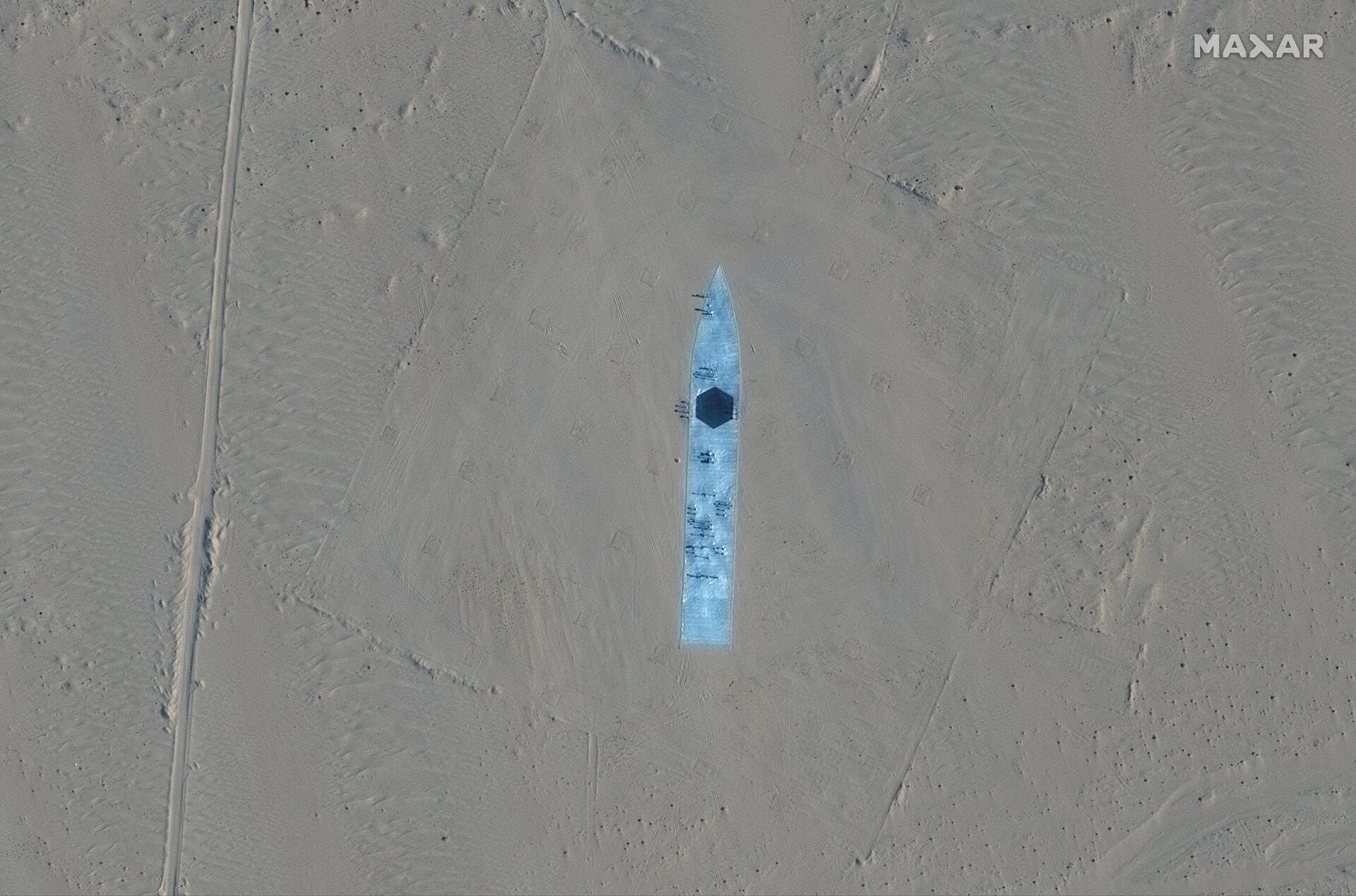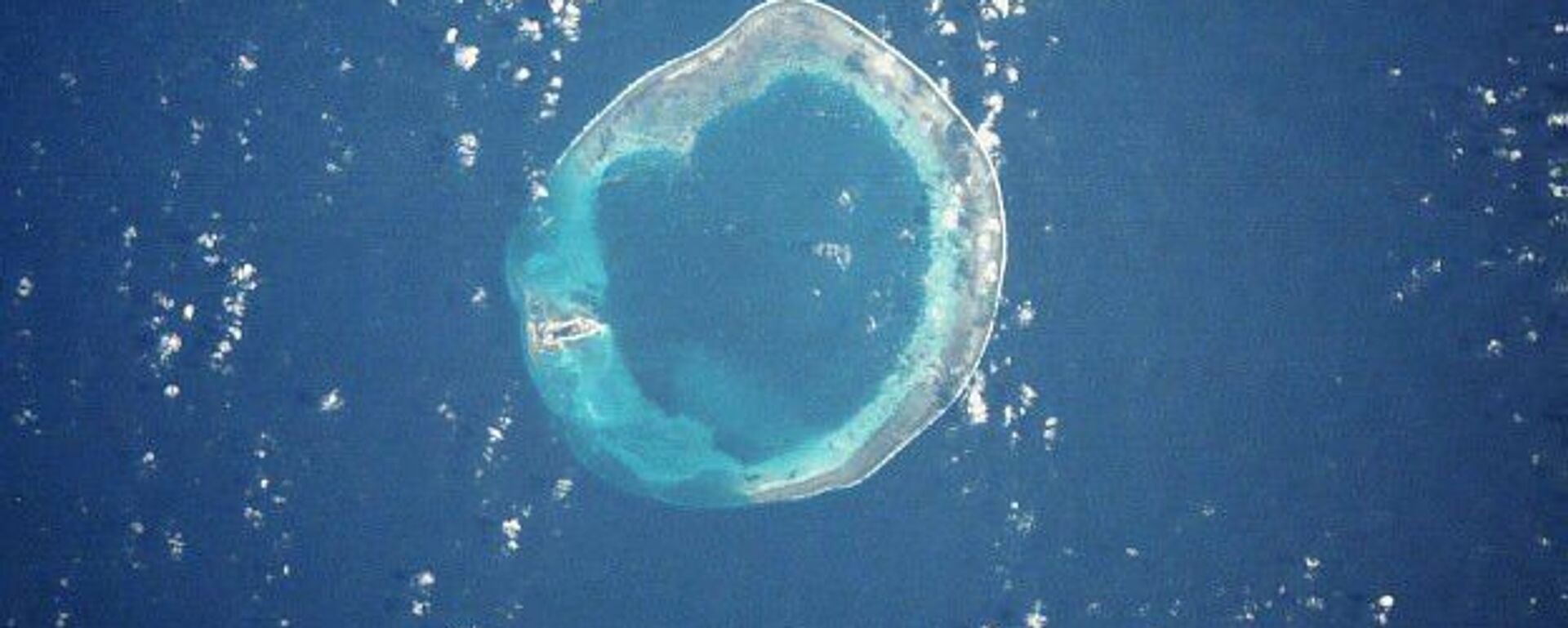China Reportedly Builds Life-Size Models of US Warships & Massive Carrier in Western Desert
13:54 GMT 08.11.2021 (Updated: 14:39 GMT 08.11.2021)

© AFP 2023 / Handout / Satellite image ©2021 Maxar Technologies
Subscribe
The Pentagon has expressed serious concerns about the People’s Liberation Army’s (PLA) dramatic advances in its anti-access/area-denial (A2/AD) capabilities – consisting of everything from anti-ship and anti-air missile systems to long-range ballistic and cruise missiles, electronic warfare, and interceptor jets.
The PLA has reportedly built full-scale model targets shaped like US warships at a target range in its western Taklamakan desert, satellite photos snapped by private earth imaging company Maxar appear to show.
The images, taken on 20 October 2021, include a silhouette of a target that looks suspiciously similar to the outline of the USS Gerald Ford, the newest, costliest and largest-ever aircraft carrier ever commissioned.
Along with the carrier, the photos show two detailed Arleigh Burke-class missile destroyers at the Ruoqiang county range.

This handout satellite image released by Maxar Technologies on November 8, 2021 shows a target depicting a destroyer ship in Ruoqiang county in the Taklamakan Desert, in China's western Xinjiang region on October 20, 2021
© AFP 2023 / Handout / Satellite image ©2021 Maxar Technologies
While the outline of the carrier is crude and appears to have been fashioned out of an unspecified black or dark navy blue material, the smaller vessels are quite detailed and appear to include mockups of the destroyers’ vertical launch systems, bridge infrastructure, funnels, and helipad, as well as mysterious vertical poles. Open-source intelligence analyst H I Sutton suggests the latter may contain high-speed sensors, cameras, and/or radar reflectors.
The satellite images also include an image of a large rectangular rail-mobile target ship, also fitted out with mysterious upright poles.

This handout satellite image released by Maxar Technologies on November 8, 2021 shows a mobile target on a rail track in Ruoqiang county in the Taklamakan Desert, in China's western Xinjiang region on October 20, 2021
© AFP 2023 / Handout / Satellite image ©2021 Maxar Technologies
Asked to comment on US media reporting on the mockups on Monday, Chinese Foreign Ministry Spokesman Wang Wenbin told reporters that he was “not aware of the situation.”
China has used its western desert areas extensively to test its latest missile systems, testing out its DF-21D carrier killer at the Ruoqiang county range in the early 2010s, and conducting other conventional ballistic missile testing in the area before and since.
The PLA is known to have amassed a vast array of ground, ship, and air-launched ballistic and cruise missiles to take on enemy warships – including the ground-based DF-21D – which features a manoeuvrable reentry vehicle designed to make its interception by a carrier group’s layered defences difficult. The PLA’s H-6 bomber force is equipped with its own anti-ship missiles, possibly including the massive air-launched anti-ship ballistic missile designated by the US as the "CH-AS-X-13."
The release of the satellite images of the mockups comes amid growing tensions between Beijing and Washington over a broad range of issues, including US "freedom of navigation" missions through sea areas claimed by China, an ongoing trade and tech war, and President Joe Biden’s commitment to "defend Taiwan" – which the PRC considers an integral part of the People’s Republic that’s destined for eventual reunification.

